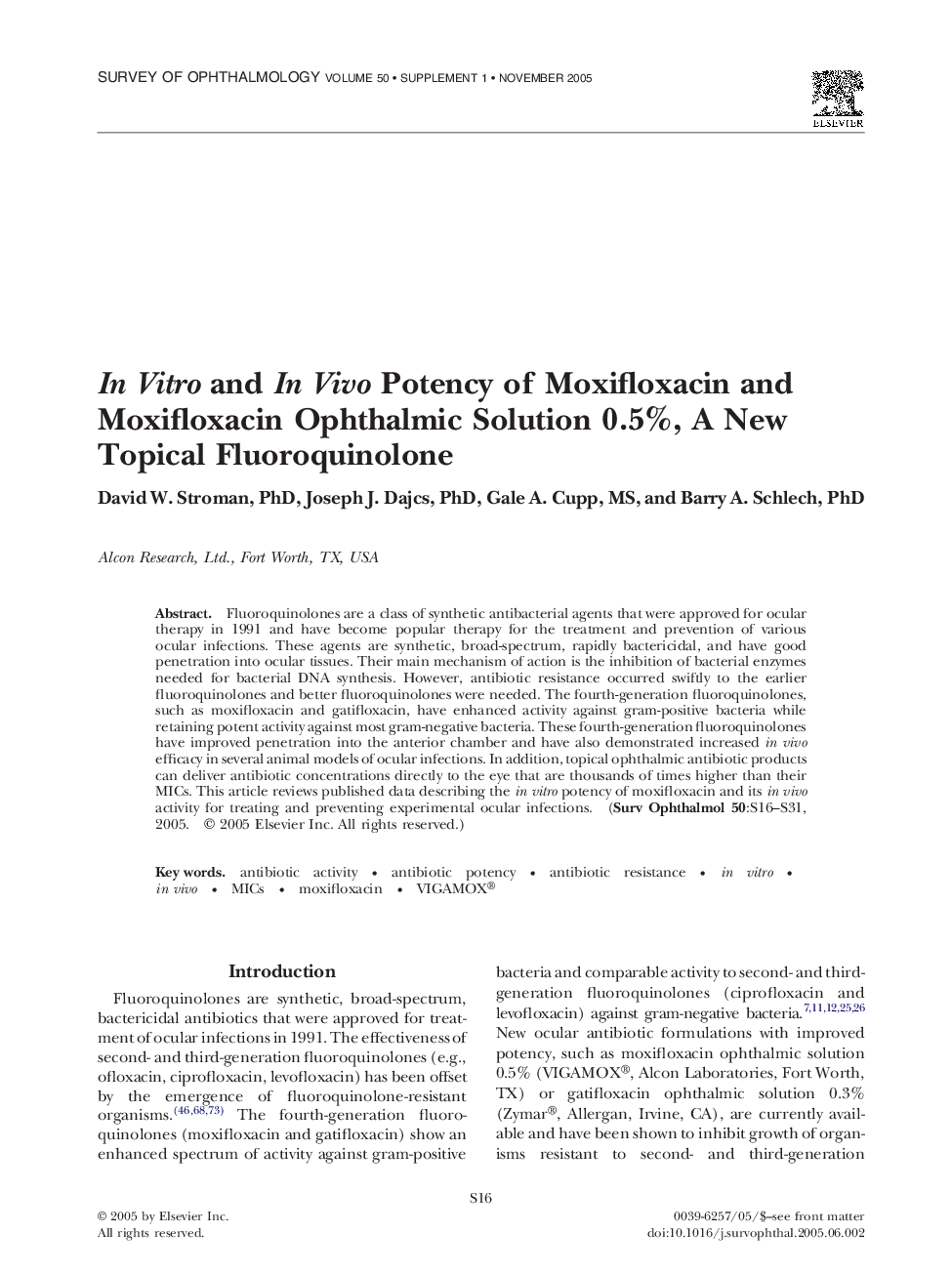| Article ID | Journal | Published Year | Pages | File Type |
|---|---|---|---|---|
| 10078237 | Survey of Ophthalmology | 2005 | 16 Pages |
Abstract
Fluoroquinolones are a class of synthetic antibacterial agents that were approved for ocular therapy in 1991 and have become popular therapy for the treatment and prevention of various ocular infections. These agents are synthetic, broad-spectrum, rapidly bactericidal, and have good penetration into ocular tissues. Their main mechanism of action is the inhibition of bacterial enzymes needed for bacterial DNA synthesis. However, antibiotic resistance occurred swiftly to the earlier fluoroquinolones and better fluoroquinolones were needed. The fourth-generation fluoroquinolones, such as moxifloxacin and gatifloxacin, have enhanced activity against gram-positive bacteria while retaining potent activity against most gram-negative bacteria. These fourth-generation fluoroquinolones have improved penetration into the anterior chamber and have also demonstrated increased in vivo efficacy in several animal models of ocular infections. In addition, topical ophthalmic antibiotic products can deliver antibiotic concentrations directly to the eye that are thousands of times higher than their MICs. This article reviews published data describing the in vitro potency of moxifloxacin and its in vivo activity for treating and preventing experimental ocular infections.
Related Topics
Health Sciences
Medicine and Dentistry
Ophthalmology
Authors
David W. PhD, Joseph J. PhD, Gale A. MS, Barry A. PhD,
